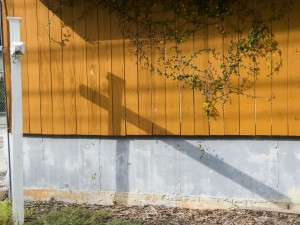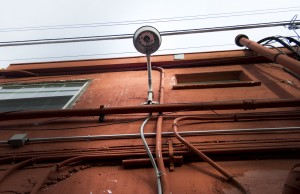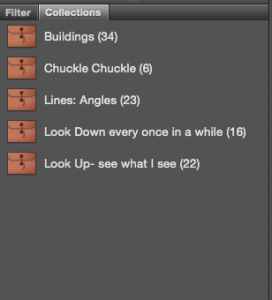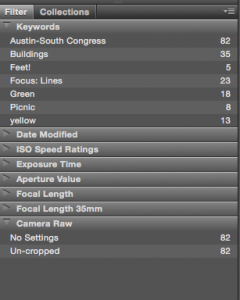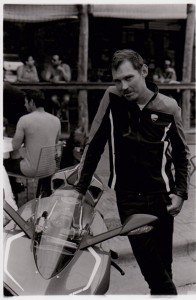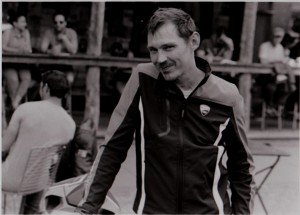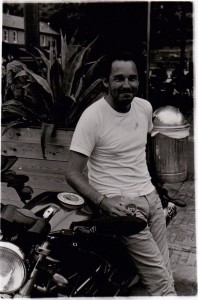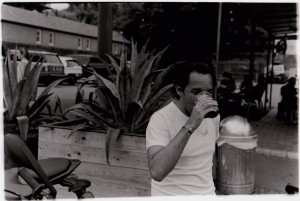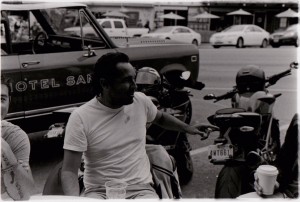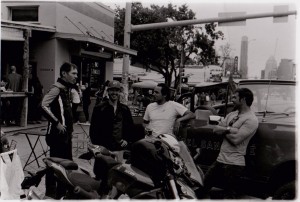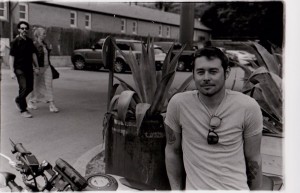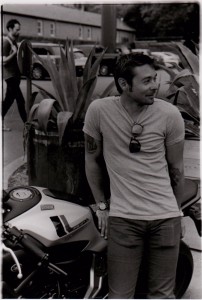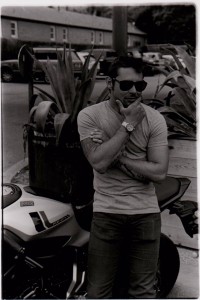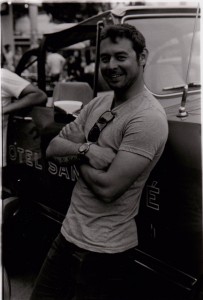VISU1311: Creativity Blog #5
My first camera, I suppose you would call it, was a Polaroid One-Step Express. At the time that I used it, it was around the year 2001 and the show Stanley’s Great Big Book of Everything was my favorite. In it, a boy named Stanley, of course, used a camera to take pictures of animals; he would then put them in a scrapbook that had everything. I wanted to do that. I wanted to have a scrapbook; and so, my mother got me a photobook and we took pictures of my stuffed animals, because I had so many of various species, and I made a Great Big Book of Everything (Sabrina style). That was the first time I used a camera and I fell in love. I next fell in love with the camcorder and the flip-phone camera. That was my childhood and I loved it. I am now grown and my love of photography, specifically film photography, still sticks around.
I talk of Polaroids and film photography so extensively because of Keith Richards’ story with how he first began to play the guitar. I suppose I began to reminisce on the old times, as he had. One thing that he talked about which really stuck to me was his discussion on having a base. In regards to him and acoustic guitar playing, he says, “you have to have your grounding”—your beginning. For any conscious photographer, they will say that film is the basis to photography and to any Photoshop program out there—that’s how we know to change exposures and contrasts and etc. Richards says, again in regards to guitar playing, “learn the feel and the touch of the frets. Then you can add the effects.” I translate this, as an aspiring photographer, to learning the feel of the shutter and the blindness of the darkroom before you get in the more advanced aspects of photography—before getting into the effects of customized developer, toners, and different papers. Another interesting topic that Richards talks about is the concept “there’s two sides to every story”. In terms of guitar playing, he says that this relates to the communication of the left and right hand to the strings and frets. I translate this, as a photographer, to the communication of the human eye and the camera eye, the lens.
All in all, I thought that “Guitar Moves” was a great show and that Keith Richards was a wonderful guest that brought aesthetic coolness to the interview. He brought his history, his memories, his skill, his cigarettes, and his charm. I think that it is a very inspiring video and I enjoyed watching both parts of it.
VISU 1311 Project #1: Sabrina_Amezcua
Those who have become familiar with Austin and its famous streets, such as South Congress, know that it is packed with tourists, artists, and locals pretty much 24/7. Though it is also packed with an atmosphere of immense culture, this means that we all see the same things over and over again. Photographers often take pictures of the same objects and talented people in the same perspective (over and over again). It was this catharsis that made me closely follow the principles of Gestalt, which are: grouping, containment, repetition, proximity, continuity, and closure; I believe that it has helped to add dimension and purpose to my photographs.
For my project, I first wanted to limit myself to POV—I wanted to take pictures of extreme ups and downs since we, as humans, typically only look and perceive what we see on the street horizontally. I wanted to take pictures of what we ignore—the sky; the ground. The concept changed throughout my journey on SOCO to exploring with lines. My photographs that are representative of Gestalt do so with angles; specifically, in the way that they either interfere or become the center of the image.
VISU1311: Creativity Blog #4.
Some say that evolution is necessary—that humans and technology relied solely on it; but, if this is true, is there a point in evolution that is bad? Is there a limit to constant progress that, when pushed beyond that limit, we actually begin to regress? In the essay “The Medium is the Massage” by Marshall McLuhan and Quentin Fiore, there are questions that arise about our Media’s evolution that I wanted to specifically dwell on, which is: the Media’s evolution and extension of its initial use to the influence it has on children and how they grow.
As we look at today’s world through the lenses of television, video, and photographs, we see a world of immense information and truths. This is the media. Media has always been about mass communication and exposure. Thinking about this concept in a political sense, the essay states that: “the oppressed will not stay oppressed”. With the media, their causes (all causes) will run through the nations TV’s—the hidden will not stay hidden and we will be our brother’s keeper; but it has evolved beyond the limits that it was set for. No longer is media the communicator of the world, but it has become many things and now wears different hats that were not made for it.
For instance, the essay talks about children and parenthood and the new parenthood, the media. It states that parenting is no longer relied solely on a mother and a father, perhaps not even immediate family either. It implies that the world, the way that it is mass communicated, is now our parent—our family. When thinking about such a theory, one can see both the good and bad in this shift. The positive is that one experiences opinion and culture. The bad is what kind of opinion and culture you receive; therefore, one must decide for an intermediate—a mean; a determination of good culture and good amount of knowledge of the world.
Though media is something that I am studying for and want to further evolve myself into (and though I know how intrusive it can be) I cannot help but feel scared for the regress that is occurring without the intermediacy of balance with media. Perhaps, it is something that we must work on as students; or, perhaps, it is something that cannot be stopped. Can evolution be stopped? Is there an end-stop, as there is in poetry? Is this theory even true?
G.O.A.T Fest
https://drive.google.com/drive/folders/0Bx3_QMx0MFBGNGV1U1VYZ3h4SDQ?usp=sharing
Attached is a link to the pictures that I took for Topper Radio’s first ever G.O.A.T Fest.
VISU1311: Creativity Blog #3.
Often I will see the end product of a photo in my mind and I begin to feel a sense of awe for it. I feel in awe because I think it is beautiful and because I know that I have the capability to do it; however, the aspects of that photo often seem so far away. For instance, I see an image in my mind of an old manager of mine from a fast food store sitting by an overflowed sink with his head tilted back and a sense of exhaustion emitting from him. In my mind, it is a powerful image that represents the feeling of being trapped and of feeling tired with routine. It would bring me much satisfaction to see it printed in Black and White large format. But, as artists, the ideas that we romanticize in our imaginations are a bit harder to bring into fruition: it gets messy because it is not perfect. When I think of my personal project and correlate it to what Jim Eno talks about in his podcast about the timeline of the song “Inside Out”, I come out with some central ideas: the progression and process of Art; however, I also correlate the emotion I feel from my project to Amy Tan’s discussion on what makes creativity.
In Eno’s podcast, I understood that the progression of ideas, technique, and influence are what give the end product. For instance, he talks about influence from the 2000’s and Dr. Dre and how it gave ideas for their intro. I am able to relate this to my photography by researching other photographers who shot portraits and photographers who mastered large format printing in order to learn from the advice they put into their work. Eno also talked about experimentation and “messing around” with different techniques. This idea changes the romanticized version of the picture in my head: should it be printed in large format? should it have a higher or lower contrast—which would bring a more compassionate feeling to the picture? should it be grainy or should it be sharp? The progression of what the Spoon’s song wanted—the progression of what my photograph wants—is all about time.
When pondering the different aspects of the many different Art forms and styles, one comes to a conclusion that the theory of progress and process are relatively equal in all subcategories. Comparing Eno’s timeline of the work that went into the song “Inside Out” to the timeline of work that goes into any finished project, a catharsis of seemingly simple information occurs: the metadata of a project is the key to its success. For instance, in the case of Spoon’s “Inside Out”, all the components of the song (vocal ranges and edits, instrumental keys and evolution of beats, and etc. etc.) are all singularly important to the effect of the song; not one component should lack lest, in result, they give the song a lack of effect. The way that I transcribe this information into my work with film photography is with the details that make my negatives and prints satisfactory to me. For instance, I should take careful notice on my developing process as well as what kind of developer a specific roll of film desires; or perhaps, I should examine the way that I edit my photographs with the variations of contrast and the areas of a photo that I would want to dodge or burn. Therefore, in retrospect to Eno’s podcast, I now realize that mediocre work would result in a mediocre finale.
When considering what Amy tan talks about in her presentation on the creative process of nature, nurture, and nightmares, I can understand how my sympathy for such an imaginative image comes to be. She states that nature is something we have in our bodies—perhaps our brains—that allows us to see artistically and reflectively. I think that I may agree with this; I have a compassion for those I meet and become friends with, such as my old manager that I picture in my head. She also states that nurture and nightmares can come in a form of trauma. This, I believe, is where I empathize with the picture in my mind—with the tired worker who is stuck in that place and in that picture. I empathize because I’ve also experienced the trauma he continues to experience and it makes the picture in my head so beautiful because it is so real.
Through these media’s, I have randomly applied their information to a personal project of mine and I now believe that there is hope for it; through the technique that I found in Eno’s timeline and the emotion that I now understand in my creativity, perhaps—perhaps it will become real.















